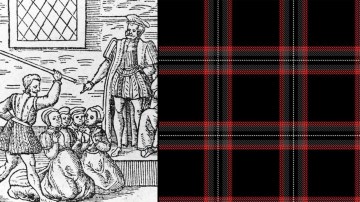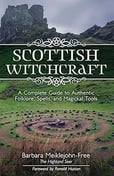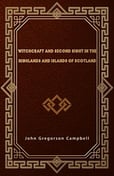Scotland's Acknowledgment of Its Witches: A Journey of Recognition and Healing
Witches Tartan
WITCHES
Lily
3/1/20253 min read


In recent years, Scotland has taken significant steps toward acknowledging and honoring those who were persecuted during the notorious witch hunts that ravaged the country between the 16th and 18th centuries. Thousands of people—mostly women—were accused of witchcraft, tortured, and executed in a climate of fear and superstition. The historical reckoning is long overdue, and Scotland's efforts to confront its dark past are symbolic of both justice and healing.
Acknowledging the Past
The Scottish witch hunts were fueled by a combination of religious, social, and political factors. During this period, accusations of witchcraft were often used to explain misfortunes such as disease, crop failure, and natural disasters. The witches, typically vulnerable women, were blamed for these miseries, leading to their brutal persecution.
In 2021, Scotland made an official apology, acknowledging the harm caused by these actions. This acknowledgment was not just symbolic but also included plans to build a memorial to honor those who were wronged. The memorial is slated to be placed in Edinburgh, in recognition of the lives lost and the suffering endured. The move is seen as an important step in coming to terms with this part of Scotland's history.
The Memorial to Witches
The memorial, which will stand as a tribute to the estimated 4,000 people who were accused and executed for witchcraft, is expected to provide a place for reflection and healing. It aims to raise awareness about the unjust treatment of those persecuted during the witch hunts. For many descendants of those who lived through this tragedy, it is a moment of emotional reckoning.
Scotland’s Tartan: A Symbol of Heritage
The connection between Scotland’s history and its symbolic tartans is deeply intertwined. Tartans, often recognized for their striking patterns and colors, reflect the clan system, heritage, and cultural pride of the Scottish people. The tartan also has its place in honoring the resilience of those who lived through Scotland’s troubled times.
While the tartan may not have a direct connection to the witch trials, it is a symbol of Scotland’s ability to recognize its heritage and history—both the bright and the dark parts. Much like Scotland’s efforts to acknowledge the witches, the tartan represents a commitment to remembering the past, learning from it, and moving toward a more inclusive future.
The Scottish tartan, with its bold and beautiful patterns, stands as a constant reminder of Scotland’s rich cultural legacy, now being extended to include the painful yet important recognition of the witches.
LINKS
Scottish Witchcraft: A Complete Guide to Authentic Folklore, Spells, and Magickal Tools Paperback – November 8, 2019
As an Amazon Associate I earn from qualifying purchases.
Scottish Witchcraft & Magick: The Craft of the Picts Paperback – November 8, 2005
As an Amazon Associate I earn from qualifying purchases.
Highland Redstone Cloak Tartan P.V for Women - Scottish Tartan Cloak for Stylish Comfort and Warmth
As an Amazon Associate I earn from qualifying purchases.
Scottish Witchcraft Trials (Scottish History Society 6th Series, 20) Hardcover – March 25, 2025
As an Amazon Associate I earn from qualifying purchases.
The Witches of Scotland: The Dream Dancers: Akashic Chronicles Book 1 Paperback – April 16, 2022
As an Amazon Associate I earn from qualifying purchases.
The Witches of Scotland: The Edinburgh Files - Book 1 Paperback – July 31, 2024
As an Amazon Associate I earn from qualifying purchases.
As an Amazon Associate I earn from qualifying purchases.
As an Amazon Associate I earn from qualifying purchases.
As an Amazon Associate I earn from qualifying purchases.
As an Amazon Associate I earn from qualifying purchases.
As an Amazon Associate I earn from qualifying purchases.
Magick
Explore the enchanting realm of Witchcraft today.
©Lilyopatra 2025. All rights reserved.
All SALES ARE FINAL, and we appreciate your understanding of our site policy. Once a purchase is made, we cannot offer refunds or exchanges for any items. This policy ensures that we can maintain low prices and high-quality products for our customers. We encourage you to thoroughly review product descriptions, sizes, and specifications before completing your purchase to avoid any dissatisfaction. If you have any questions about an item, please reach out to our customer service team prior to ordering. We value your business and are committed to providing a positive shopping experience, but once a transaction is finalized, we are unable to accommodate any changes or returns.
Thank you for your cooperation and support.











